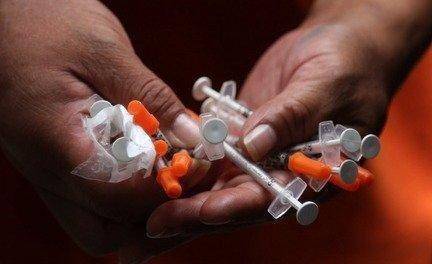In the second part of a five-part series concerning the Needle Exchange Program, Debbie Marvidikis, Program Director and Health Educator and Kathy Donathan, Community Health Specialist, with the Southeastern Utah Health Department, spoke about the program and why they believe it will be a positive for Carbon and Emery counties.
Marvidikis explained that she believes harm reduction in general is a positive for any community that is on the verge of an HIV and Hepatitis C epidemic. Because the program concerns harm reduction, Marvidikis continued, they didn’t say people are giving permission or accepting drug use. Harm reduction is a science to prevent disease, and when you live in a community that has high drug use and high overdose death rates, one is more inclined to be at risk for an outbreak, according to the Centers for Disease Control (CDC).
For those that are in favor of the exchange program, it is the science of disease prevention that has convinced them. Prevention is standing upstream to prevent something from happening rather than downstream trying to fix it afterward.
One factor that Marvidikis and Donathan were adamant that the community understands is the fact that the coalition intends not to just do an exchange program, they have informed the community that they are geared toward providing services for substance abuse treatment, HIV and Hepatitis C testing, access to treatment finding, detoxification services and housing resources.
In fact, the number one resource that the coalition intends to provide is the non-judgmental, non-coercive treatment that addicts are in need of. This is the first time in Carbon County history that rehab centers in Salt Lake City and Provo are holding beds open for those participating in the reduction. If the users are willing to participate in treatment, there is now an avenue to get some in when the community has never had that opportunity before.
“I hope the community knows that harm reduction will improve the health and well-being of our community,” Marvidikis stated.
The Harm Reduction Coalition has been contacted and agreed that if the community is ready for the needle-only exchange, that will take place. However, it will not completely eliminate the potential spread of HIV and Hepatitis C. It is the other means of injection, such as using the cotton as a filter, that transmits diseases, not just the needles. That is the reason behind putting together a complete package to address the transmitting.
“The first time you see that kit, it does set you back,” stated Donathan.
However, Donathan then said that once she looked at it with an open mind, she realized that there’s more to the situation than what first meets the eye. In 2016, there were 53 new Hepatitis C cases and seven new HIV cases in the health district. The needle exchange program, which is evidence based and has been proven to work in other areas, is aiming to help reduce these numbers with prevention. Utah is the 35th state to have harm reduction legalized, which happened on March 25, 2016.
When the CDC put together the vulnerability statement, which uses a geographic information system to depict human vulnerability to environmental emergencies for all states, Carbon County came in at 83 while Emery County was at 187. The highest number that you can get for an outbreak is 220. Castle Country is at high risk. The Harm Reduction Coalition is ready to work with the community.
“Let’s not turn a blind eye to a problem that potentially cannot be reversed,” Marvidikis stated.

